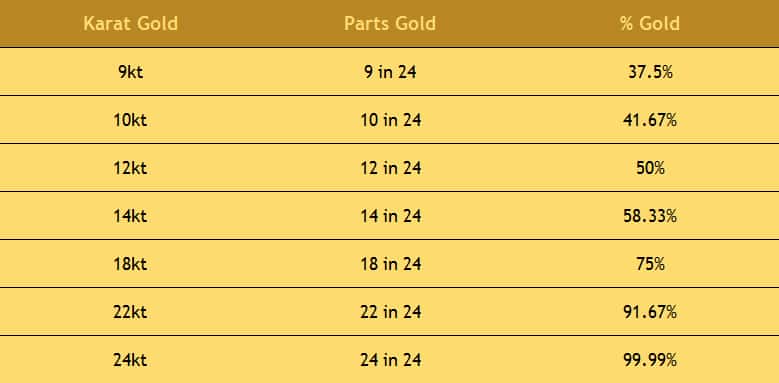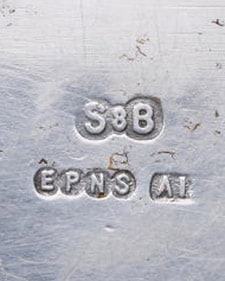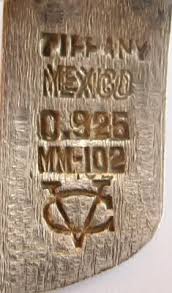When we go to buy something, we tend to look for the information. Whether we’re buying a new cellphone or computer or an appliance or a car, we want to see the specifications written somewhere so we know who made it, where it was made, and, most importantly, what’s in it. Gold Stamps, Marks, and Hallmarks help us do that with Gold.
At Canada Gold, a big part of our job is to identify the items that come through our stores. Of course, testing the item is the sure way to determine what it is (check out our blog post for how we test gold), but before we do that, we look for information, and the information comes in the form of stamps, marks, or hallmarks. Understanding what the stamps and marks mean is also a good way for sellers to identify what they have before they go to sell.
GOLD KARAT
Karat is the unit to measure the gold purity. How the karat system works is explained in another blog post, but the chart below explains the percentage of gold for each different karat.
Even though we test each item’s gold purity, a karat stamp helps us determine what we are testing for. If we see a 14k stamp on an item, we want to make sure it tests as 14k. Some items, usually old or hand-crafted jewelry, don’t have stamps. This doesn’t necessarily mean it isn’t real. It only means we have to be extra particular with our tests to make sure it’s real and how much gold is in it. Then we can give you a top, fair price for your gold.
GOLD-PLATED or GOLD-FILLED
Gold-plated, gold-filled, and sometimes called, rolled-gold, is considered “fake” gold. Most of the time this is indicated on the item next to the karat stamp. Unfortunately this is not always the case. Stamps you would normally see are:
- G.P. (gold-plated)
- GEP (gold electro-plate)
- G.F. (gold-filled)
- R.G.P. (rolled gold-plate)
STERLING SILVER
Instead of a karat system to measure purity, silver has one, standardized purity called “Sterling” and then there is everything else. The reason I say this is because sterling silver is the only silver purity standard under the Code of Federal Regulations; everything else, whether it’s a purity higher or lower, cannot be considered (marked) as sterling silver. Sterling silver is 92.5% silver and 7.5% other alloys such as copper, nickel, or zinc. Items that are authentically sterling silver are stamped with:
- STERLING
- STER
- 925
STERLING HALLMARKS
In addition to the three stamps above, hallmarks are used to indicate that an item is made with “standard silver” or sterling silver. Hallmarks are traditionally a British certifying system and are found on flatware and silverware, and each hallmark indicates: 1. Silver Standard Mark (indicating the silver content) 2. City Mark (the city it was manufactured in) 3. Duty Mark (the tax on the item that has been paid to the crown) 4. Date Letter (the year it was certified for silver content) 5. Maker’s Mark (who manufactured it) and 6. Import Marks (indicating it was in a foreign country).
The one we’re interested in is the “Silver Standard Mark” reperesnted as the walking lion facing left, like the one above fourth from the left. It is called a lion passant and it was introduced in 1544 as a British sterling standard hallmark. In this post, we will not go through the other types of hallmarks, but stay tuned for an upcoming post on British Hallmarks.
SILVERPLATE HALLMARKS & STAMPS
There are also hallmarks to indicate whether flatware/silverware is plated, much like the plated stamps used for gold. Most flatware and silverware is not solid sterling; therefore, unless it is stamped with STERLING, STER or 925 or has the British lion passant, it is more than likely plated.
Commonly on plated flatware you will see the word “PLATE”, “PLATED”, “INLAID” or “SOLDERED” and then there are marks to identify the electro-plating used: “EPNS” (Electro Plated Nickel Silver), “EPBM” (Electro Plated Britannia Metal) “EP” (Electro Plated), “BP” (Britannia Plated), “EPCA” (Electro Plated Copper Alloy), “EPGS” (Electro Plated German Silver), “EP ON COPPER” (Electro Plated on Copper), “ESM” (Electro Plated Silver Mounts), “EPWM” (Electro Plated White Metal), “MP” (Magneto Plate).
There are also hallmarks to indicate the grade of silverplate. British electroplaters used a letter code for their plated wares. The best quality is”A1” or “AI“, lower level is”A”, next level is”B“, followed by level “C“, and the lowest level “D“. Normally, these are accompanied by other British hallmarks . Locating the silverplate grade hallmarks will eliminate the mystery of whether your flatware is plated or not.
EVERYTHING ELSE (OTHER SILVERS & NON-SILVERS)
There are a lot of different “silvers” out there that aren’t sterling silver. Some of them are silver, just not sterling quality, while others are labeled as silver when they contain little or no silver at all.
Silver jewelry in Mexico is usually stamped with “MEX925”. Although the “925” suggests sterling quality, the items are not certified sterling; therefore, some pieces might be sterling silver and others could be less.
Other non-sterling silvers are stamped “800” which is 80% silver. Others are stamped “950” which is 95% silver. 950 silver would be considered sterling silver, but it is actually closer to an older silver standard called “Britannia Standard” silver which is 958 or 95.8% fine silver.
Then there are silvers that are labeled with the word silver, but are not actually silver. The most common examples of this are “German Silver” or “Alpacca” which are made with copper, nickel, and zinc (no silver whatsoever!).
Now and again, unusual stamps and marks come up that even we at Canada Gold have never seen before. Nonetheless, they share the same basic principle: information. For us and our sellers, what we look for first are the stamps and marks that indicate content (gold, silver, real or fake). Have a look through your items and if you come across anything you don’t recognize, leave us a comment and we will be more than welcome to do a little bit of investigating.







